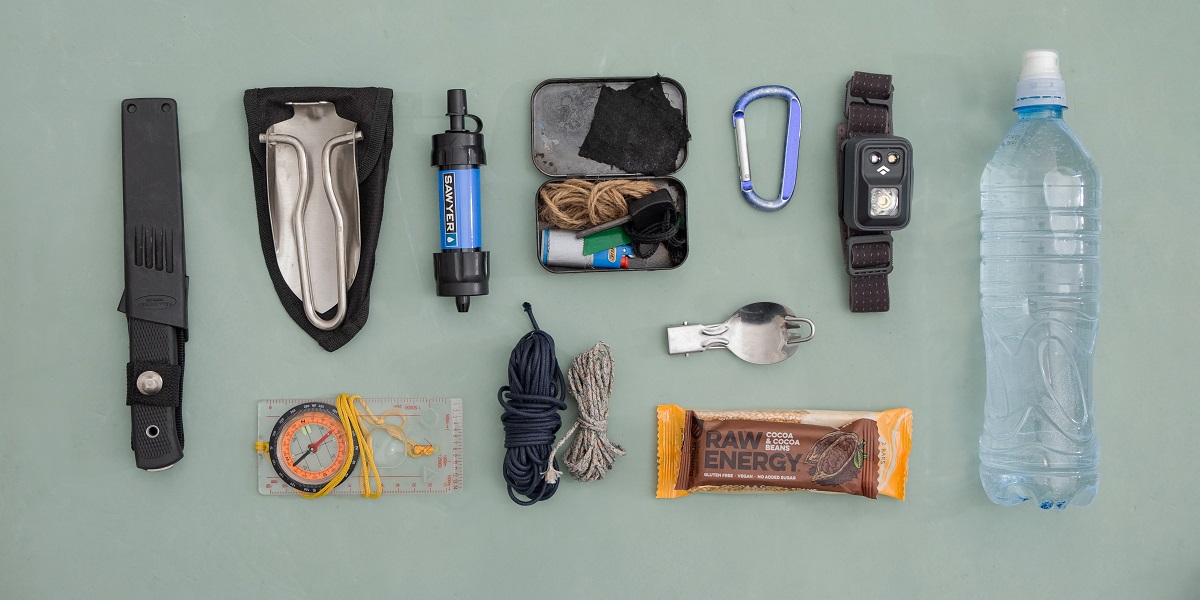Prepping used to be a term that brought up images of paranoid people locked in military-style camps with watchtowers and guns pointing out.
But now the general public is waking up to the need to prep. If you are new to prepping and don’t know where to start, don’t worry.
This article outlines the 10 steps you need to take to start prepping.
Step 1: The Prepper Mentality
Prepping isn’t a set of steps to take. Prepping is a mentality.
It means that you accept that a disaster could strike. It means taking responsibility for your own safety and security and that of your family. It means being active in the face of disaster instead of passive.
Take some time to research the most likely disasters in your state. These include risks like EMP attack, hurricanes, flooding, earthquakes, economic collapse, etc…
Yes, some of these threats are highly unlikely – but “highly unlikely” doesn’t mean it won’t happen.
By accepting that there is a real risk, you will be in a better position psychologically when disaster does strike. This alone may be enough to save you since you will be ready to take action instead of panicking in the face of danger.
Step 2: Water
Water is the most essential aspect of life, and you can only go about 3 days without water before dying. In addition, we rely on water for hygiene and sanitation. For these reasons, water should be your main focus when prepping.
It isn’t enough to stockpile water (though this is a good start). You must also know how to purify water that might be contaminated. Here are some steps to work on:
- Stockpile 1-2 gallons of water per person, aiming for a 30-day supply – more about how much emergency water is needed
- Learn how to store water
- Learn about water storage containers
- Learn how to harvest rainwater for survival
Step 3: Food
Beginner preppers can start by stockpiling non-perishable food items, such as canned goods and cereals. Like your water supply, you should aim for a 30-day supply.
You can get a list of foods to stockpile here.
You don’t have to go out and buy an entire stockpile in one trip. Just buy a little extra at each grocery shopping trip until you’ve built up an impressive stockpile.
But this is just the start.
What would you do in an actual SHTF situation after your food stockpile ran out? The supermarket shelves will have long been bare, and everyone around you is also hungry.
That is why a lot of prepping deals with methods of obtaining food.
As a newbie to prepping, start with stockpiling (and ensure you know how to store your stockpile correctly!). Over time, you will want to start researching and practicing these food prepping tactics:
Step 4: Non-Food Items to Stockpile
Food and water will only take you so far when the grid has gone down.
Here are some of the questions to consider when prepping for disaster:
How will you go to the bathroom when there is no plumbing?
How will you stay clean without a running faucet and soap?
How will you light your home without electricity?
How will you treat infections or sickness when there aren’t any pharmacies?
Luckily, there are answers to all of them – so long as you prepped ahead. Again, you don’t have to learn the answers to these questions immediately. Just start thinking about how you’d function during a disaster and get supplies to help.
For example, you’ll want to stock up on buckets, trash bags (for an emergency toilet), flashlights, emergency candles, and other supplies.
See a list of non-food items to stockpile here.
Step 5: Disaster Plans and Drills
This is especially important for preppers with families. You need to come up with a clear plan about what to do during a disaster or emergency situation. Some of the core things to include in your plan are:
- Family communication plan
- Meeting point
- Backup meeting point
- Emergency contacts
- Procedures for specific types of disasters (fire, flooding, earthquake, etc.)
A plan is a good start, but you must PRACTICE YOUR PLAN. Run drills of the plan to make sure everyone understands what to do. The drills will also help highlight any holes or weak spots in your plans.
For starters, try doing 3 days without electricity in your home and see how you fare. Did you have enough candles and batteries for your flashlights? Were you able to cook your meals without electricity?
Step 6: Build Survival Kits
It amazes me how many people lack a basic first aid kit in their homes and cars. And don’t get me started on the number of people who don’t have other essential gear like battery-operated radios and flashlights at home.
A straightforward thing you can do to help you through a disaster is to build a survival kit. Bear in mind that you need to build different types of survival kits.
Here are just some:
Step 7: Learn First Aid
Learn some basic first aid skills and invest in a good quality first aid kit.
Step 8: Go Low-Tech
We’ve gotten so spoiled by technology and electronics that many of us would be completely lost without them.
Think about it. Do you know how to navigate without GPS? Do you know how to cook without power? Do you know how to heat your home when the grid goes down?
Going low-tech doesn’t necessarily have to mean losing comfort. But it does mean a lifestyle change. I enjoy chopping my own firewood, and playing board games with my family is more enjoyable than watching TV.
To prepare for a low-tech life, try this: Spend 1 day without electricity in your home. You will quickly encounter many issues – like heating and lighting. Get supplies to solve these issues (such as buying a camping stove and flashlights).
Now try going without electricity again but for a longer time. Did your gear solve the problem, or do you need different gear or another solution?
Step 9: Learn Outdoor Survival Skills
Many preppers talk about “Bugging Out” into the wilderness in a SHTF situation. The truth is that it is probably better for most people to stay at home (aka Hunker Down) than Bug Out.
The primary reason is that we are more secure on turf we are familiar with. But another big reason against Bugging Out is that most people couldn’t survive in the wilderness.
As you get more into prepping, take some time to learn wilderness survival skills in case you ever have to rough it outdoors. The best way to get started with outdoor survival is to simply go camping.
Also, read these useful articles:
Step 10: Plan an Escape
Like with all the other steps for getting started with prepping, this one has multiple levels.
On a basic level, you should plan where you would go in a small-scale disaster. For example, if your home is flooded, where would you go? Maybe to a friend’s or relative’s house in the next town over.
The next level of escape planning is for a large-scale disaster, such as a hurricane. You have to think of where you would go and how you would get there. Consider that there might be roadblocks, severe conditions, or traffic jams.
The uppermost level of escape planning involves finding a survival retreat for significant SHTF situations. I haven’t bought a survival property, but I have the routes planned for my Bug Out Location.
How far along are you in prepping? Any tips for newbies? Let us know in the comments below.
















